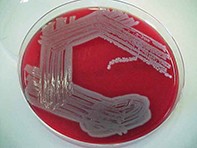Peer Reviewed
Infectious diseases clinic
Managing MRSA infections in the community
Abstract
Staphylococcus aureus infections seen in the community are now often due to methicillin-resistant strains. All suspected S. aureus lesions should be swabbed to determine whether methicillin-resistant strains are present and detect resistances to other non-beta-lactam antibiotics used in treatment.
Key Points
- penicillin resistance in S. aureus in the mid-1940s
- waves of methicillin-resistant S. aureus (MRSA) in hospitals in the 1960s and the 1970s to the present
- MRSA in the community from the 1990s to the present.
Staphylococcus aureus has several salient features: it is associated with protean clinical manifestations ranging from colonisation to severe infections, it is spread person-to-person directly and via fomites, and it has the ability to acquire antibiotic resistance genes by horizontal gene transfer and mutation. Epidemic waves of strains of S. aureus with resistance to key antibiotics have occurred since the 1940s:
Purchase the PDF version of this article
Already a subscriber? Login here.

